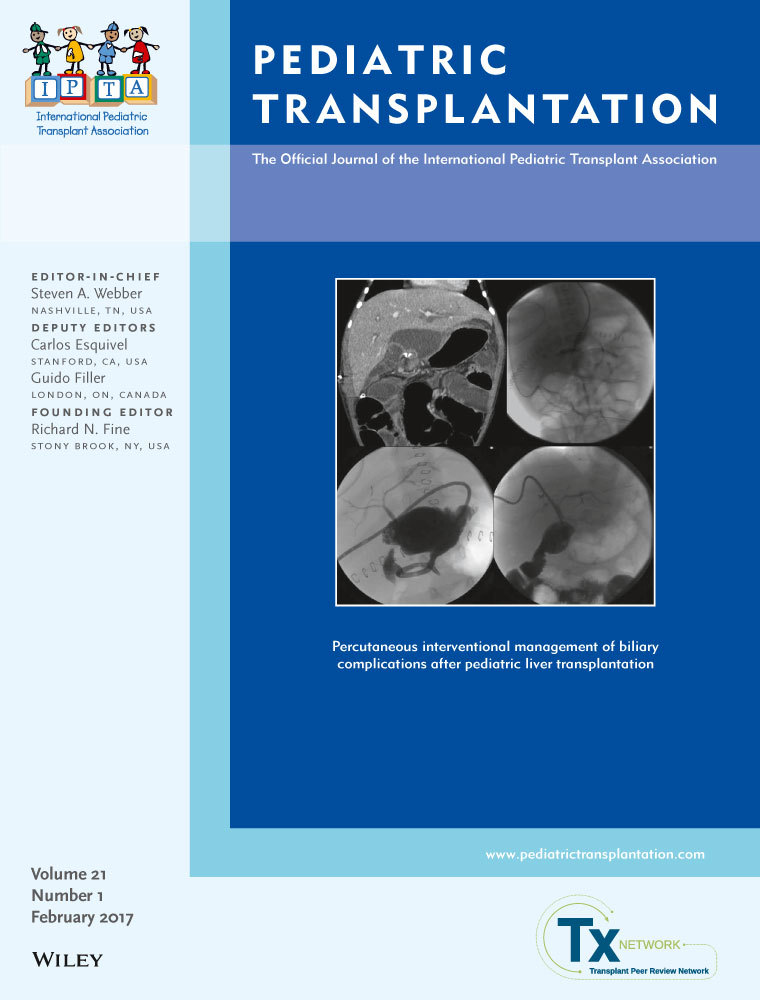Percutaneous interventional management of biliary complications after pediatric liver transplantation: A 16-year single-institution experience
Abstract
The aim of the study was to investigate the BiCx after the pediatric OLT and to assess the efficacy of the fluoroscopic-guided PBI in the patients with BiCx as compared to the SR. A total of 340 OLTs were performed in 302 patients over the last 16 years. The inclusion criteria were the presence of BS or BL as a complication after OLT. The management of the BiCx was studied. Graft revision, graft loss, and survival were evaluated following PBI and SR. BiCx occurred in 17.1% (58/339) of the transplants; 6.2% (21/339) of transplants demonstrated BL and 12.7% (43/339) of the transplants had BS. Overall graft survival rates at 1 and 3 years in OLT with BL treated with PBI were 75.0% and 68.8% as compared with 75% and 66.7% in OLT treated with SR (P>.05). Overall graft survival rates at 1 and 3 years in OLT with BS treated with PBI were 70.6% and 54.5% as compared with 71.4% and 50% in OLT with SR or ERCP, respectively (P>.05). Based on the results, we conclude that PBI is as effective as SR in patients with the BL and BS after OLT.




